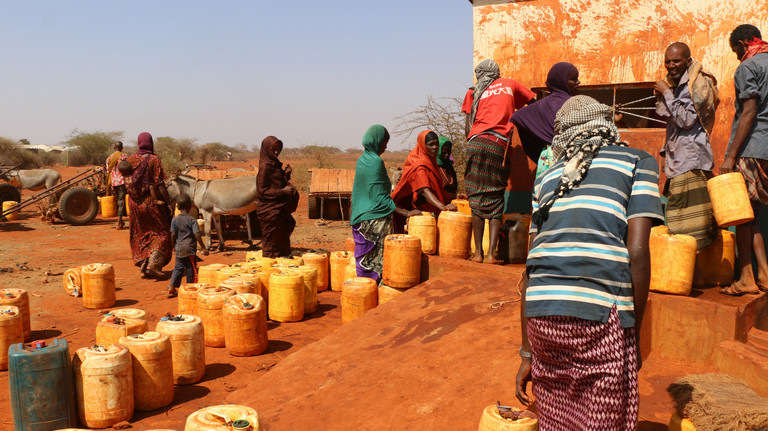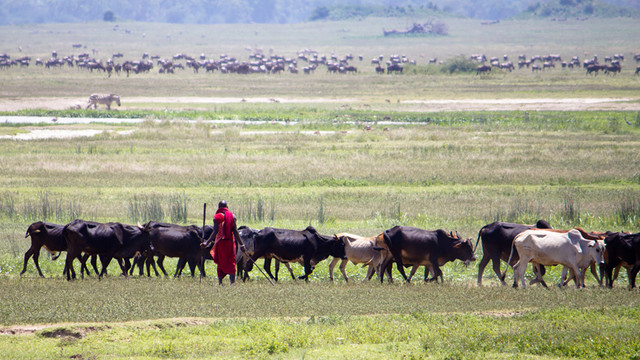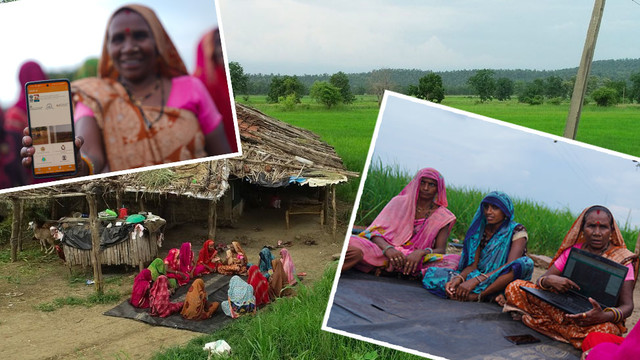Supporting adaptation through local-level climate finance: lessons from Kenya
Kenya’s transformational County Climate Change Fund mechanism demonstrates how to get climate funds to the local level and involve the people who are most vulnerable to the hazards of a changing climate in deciding how to spend them.



Women fetching water at a water kiosk in Wajir (Photo: Jane Kiiru/Ada Consortium)
Initially piloted in five counties between 2011-18, the County Climate Change Fund (CCCF) is being scaled out to new areas, including Kenya’s lake and coastal regions. This tested and trusted mechanism facilitates the flow of climate finance to county governments and empowers local communities.
Recognising that adaptation action is best planned locally and informed by local experiences and perspectives, CCCF strengthens public participation in managing and spending climate finance and making decisions about adaptation priorities to build their resilience.
The pilot invested GBP£1.91 million into 99 community-prioritised resilience-building projects across the five counties, directly benefiting more than 500,000 people.
@GovernorVihiga assents to the County #ClimateChange Fund Act #CCCF in @VihigaCountyGov Kudos to @CAID_Kenya for supporting them achieve the milestone. Other counties with #CCCF @OfficialMakueni @KituiCountyGovt @WajirCountyKE @IsioloU. Support from @LREB14 @IIED @KenyaGovernors pic.twitter.com/vme9q1uFTh
— AdaptationConsortium (@adaconsortium) September 3, 2019
Investments included supporting customary range management institutions and building and/or rehabilitating sand dams, water pans, shallow wells and earth dams; boreholes; water harvesting systems; domestic water kiosks and sanitation facilities; a livestock laboratory; and a community radio station.
Empowering communities
Planning under CCCF is citizen-centred. The government’s role is to provide the technical support that communities need to finalise the investments they have prioritised. Ward climate change planning committees (WCCPCs) – the lowest-level institutions in the CCCF governance structure – drive inclusive consultation through community meetings, using simple participatory resilience or vulnerability assessment planning tools and relevant climate information to identify adaptation investments against known budgets.
Through this approach, communities have identified high-priority, high-impact adaptation investments or services that benefit large populations. Women, youth and the ultra-poor – who have long been sidelined in decision making – are actively involved in consultation meetings, collectively influencing the choice of investments.
“It is never a passive formality thing to tick a box on the side of the county government; community are very much actively engaged, asking questions on previous priorities they have set for the counties, questioning commitments on the county side, insisting on what is of high priority to them and pushing for accountability on the side of the government” – survey respondent
The CCCF’s approach on community participation and building capacity through training has helped community members – particularly women and young people – recognise their abilities and become active and engaged members of their community.
”Establishing the WCCPCs has served as an eye opener to the members and community at large on what they are capable of achieving together and there is an increased sense of community cohesiveness and collective action” – survey respondent
This practical experience of strong public participation and demand for accountability has also empowered communities to meaningfully engage in and contribute to wider county development planning processes, including annual development budgets and five-year development plans.
Benefits for women and youth
CCCF-funded investments are already leading to significant benefits. Women’s voices have particularly influenced the choice of infrastructure in most CCCF water investments, improving access for livestock, domestic and wildlife users. This has improved water quality and hygiene while also relieving pressure on women, who are primarily responsible for managing domestic water.
In a large-scale 2018 household survey in Isiolo, Makueni and Wajir counties, all 369 respondents reported increased access to water for domestic and livestock use.
Reduced travel times for water collection are saving households two hours a day or 700 hours a year, giving women extra time to support their children’s schoolwork and develop other livelihood activities, including market gardens, smallscale irrigation and small businesses.
“We have a lot more time for various economic activities since we don’t have to trek to water points and wait for long hours” – survey respondent
Based on this alone, the water investments provide direct annual benefits of more than KES 400 million (£3 million) across the three counties. Per household, that represents more than KES 14,170 (£109) in average net annual benefits or an 8% increase in income.
There is also evidence that households are paying less to access water: those benefiting from the Masue Rock Catchment investment, for example, now pay KES 3 for a 20L jerry-can of clean water, down from KES 20. Young people are also benefiting, with children spending more time at school, improved hygiene in schools and youngsters setting up tree nurseries.
“Before, I had not seen the need to take my children to school. I thought I was wasting time, I thought they were better off herding, but the seminars and outings have opened up the world to me” – survey respondent
Institutionalising CCCF to ensure sustainability
All five pilot counties have fully institutionalised CCCF within their planning and budgeting processes, committing 1-2% of their development budgets to supporting the implementation of CCCF investments and operationalising structures to govern the fund. This ensures the mechanism is sustainable, with CCCF funding coming from the government exchequer.
Post-CCCF, communities demand accountability and strongly influence the choice of investments financed by county development budgets.
The county and ward-level climate change planning structures, anchored in CCCF legislation, promote better coordination and more efficient ways of doing climate change work. Through them, communities can present local knowledge and experiences to technical experts, influencing planning and budgeting to better realise their aspirations and priorities in building resilience.
Makueni County’s public participation framework – borrowed entirely from the CCCF mechanism model – is a practical example of how counties can ensure that public participation is not superficial and patronising.
Delivering transformational change
By showing it can deliver transformational change in governance and policy regimes for climate-resilient development and effective climate adaptation, the CCCF mechanism is challenging the business-as-usual approach to development.
Channelling global and national climate funds to those who need it most empowers individuals and communities that have traditionally been marginalised or disconnected from political and governance processes and structures.
Achieving the broader national and international development and climate agendas will require adopting such transformational approaches.
Countries can learn from the CCCF experience in Kenya and develop similar approaches to support climate-resilient development and effective adaptation as set out in the Paris Agreement and achieve the 2030 Sustainable Development Agenda pledge to ‘leave no one behind’.
- Download: Delivering climate finance at the local level to support adaptation: experiences of County Climate Change Funds in Kenya, Florence Crick, Ced Hesse, Victor Orindi, Mumina Bonaya, Jane Kiiru (2019), Working paper



